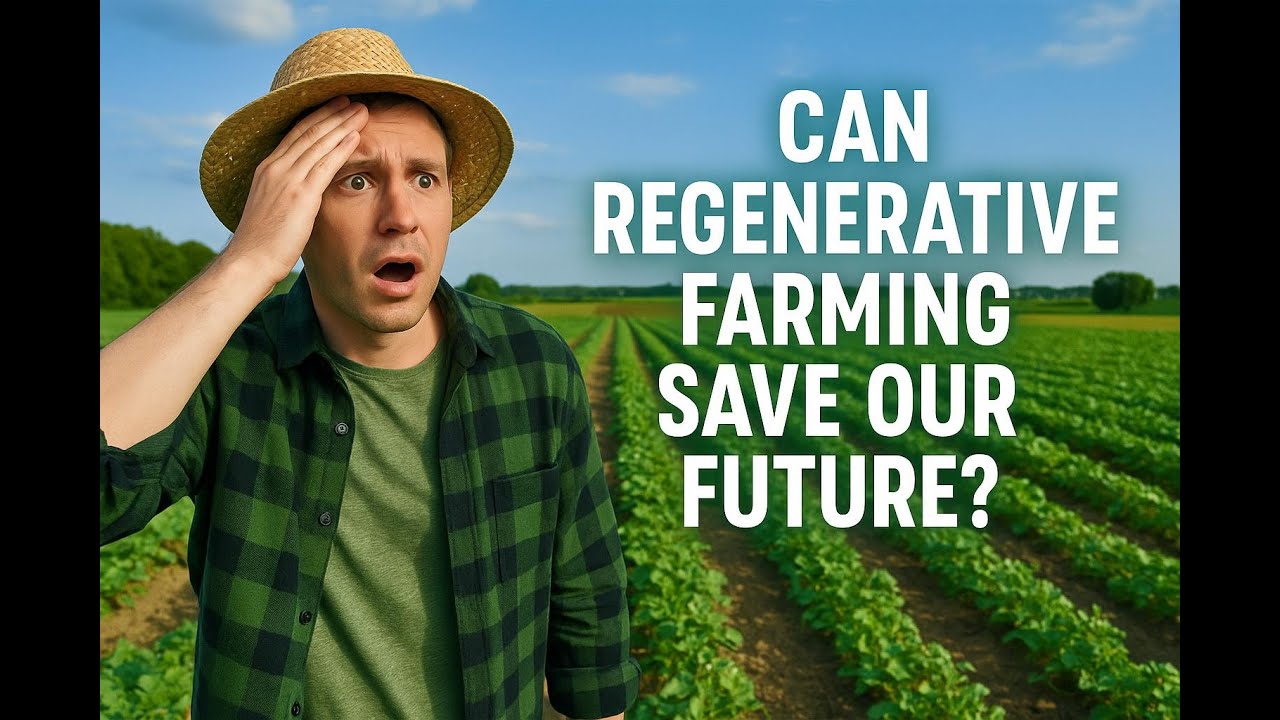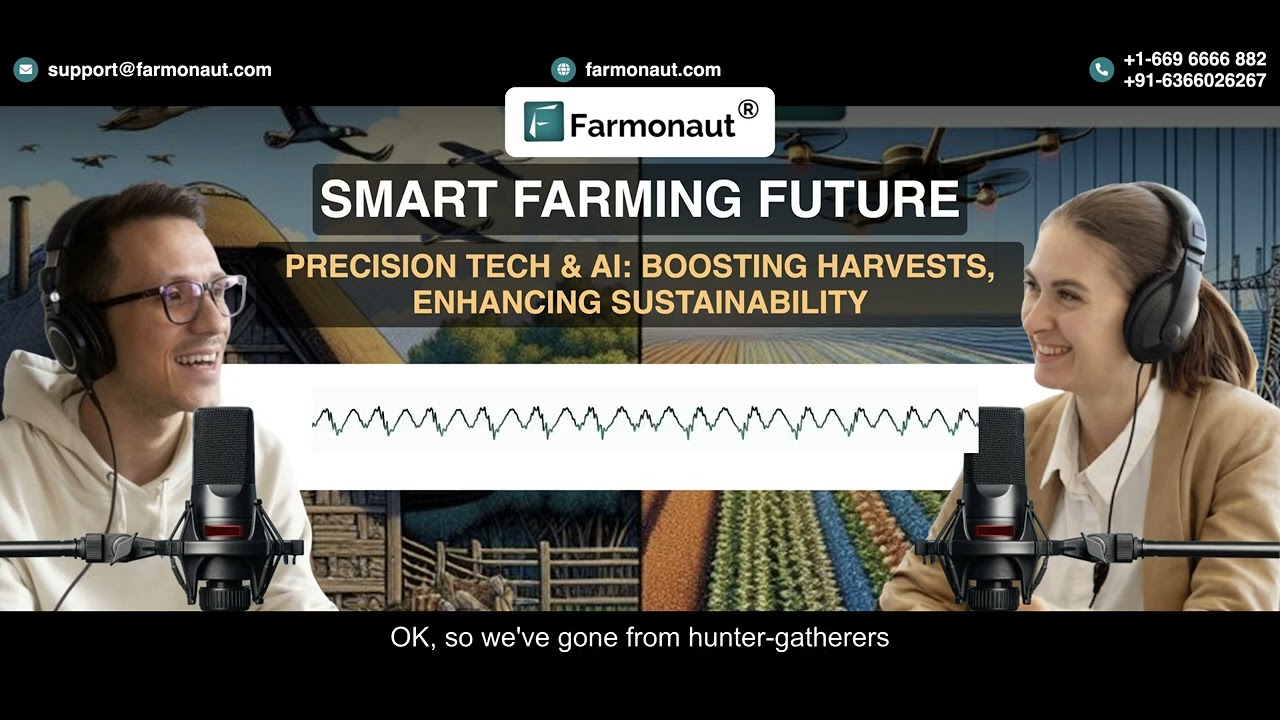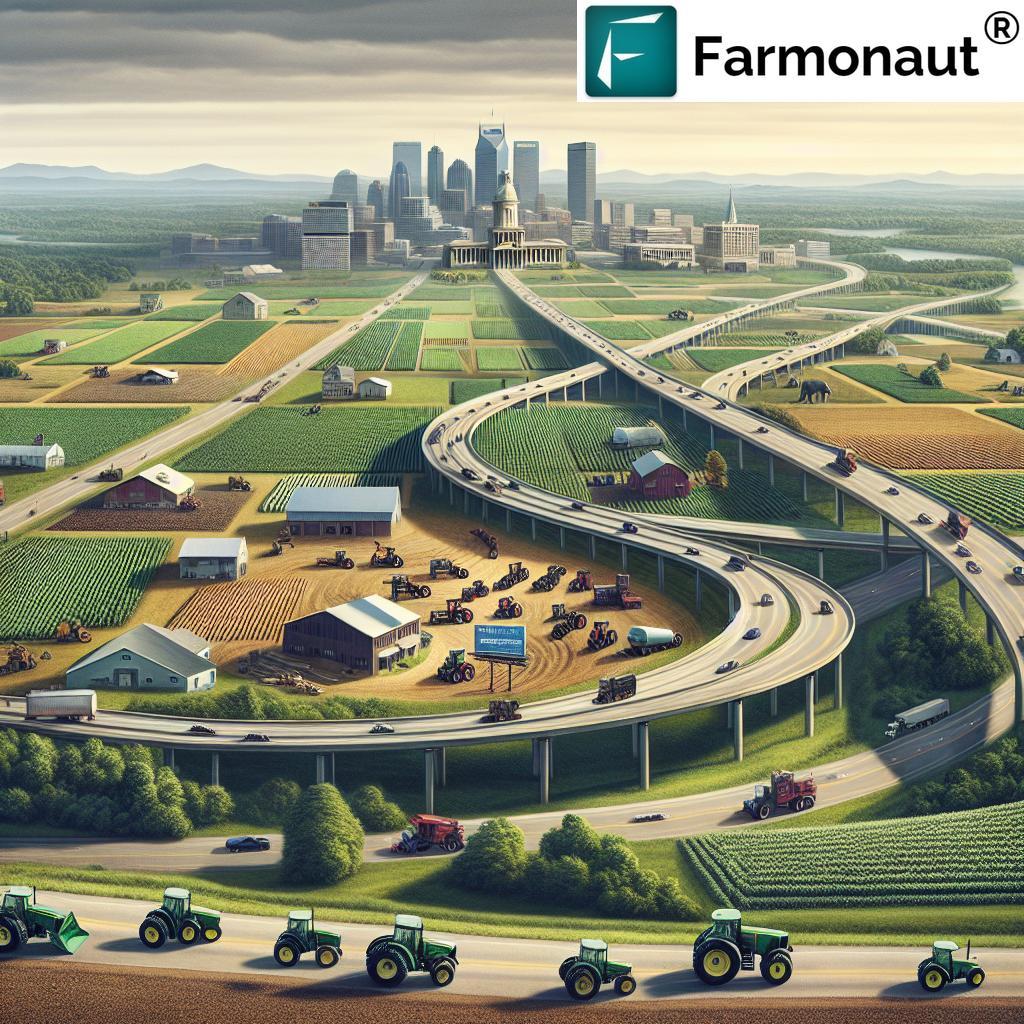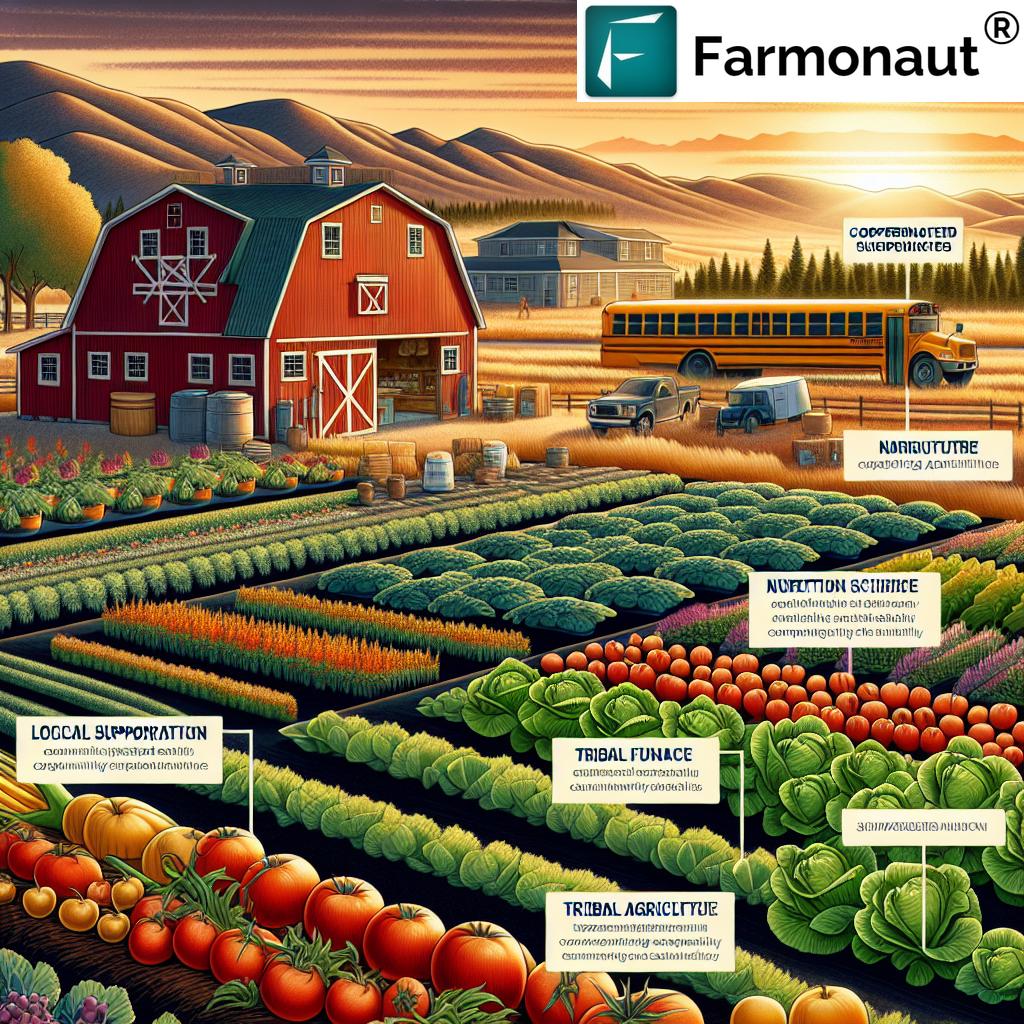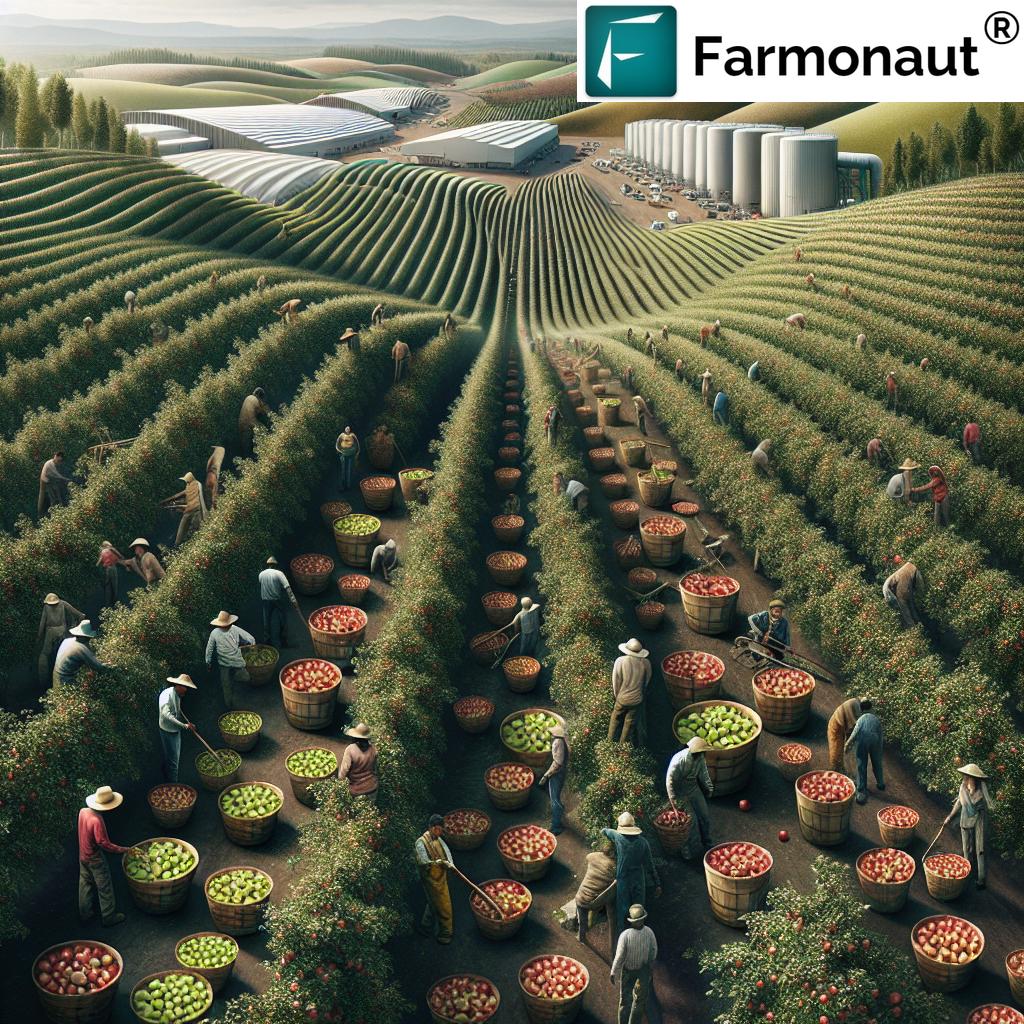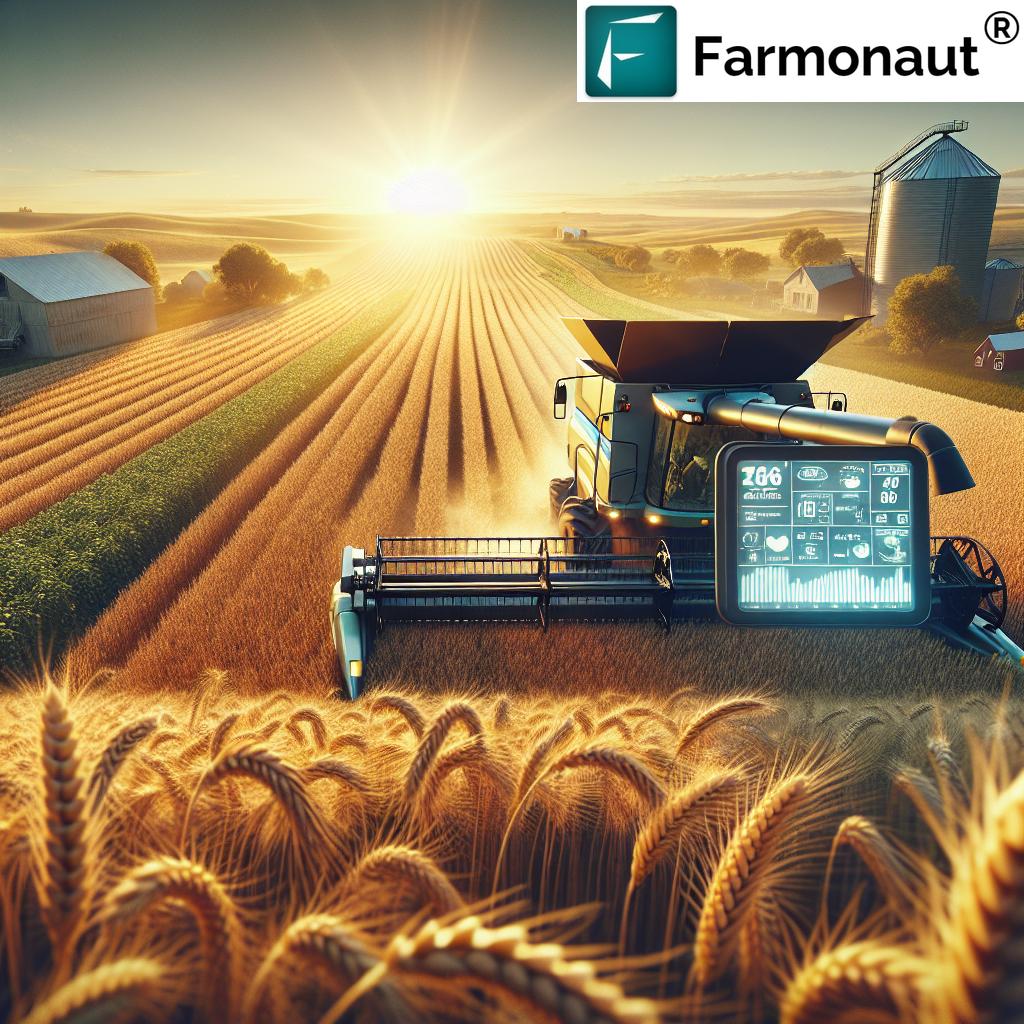Kuehnert Dairy Farm, Forest Farm Dairy: 2026 Innovations – Sustainability & Machinery at the Forefront
Table of Contents
- Introduction: Dairy Farm Innovations for 2026
- Trivia: Sustainability Achievements
- The Evolving Dynamics of Small Dairy Farms
- Balancing Tradition and Modern Technology in Dairy Farming
- The Role of Dairy Farm Machinery in Productivity & Sustainability
- Forest Farm Dairy & Agroforestry: Integrating Sustainability
- Dairy Goat Farm: Niche Approaches to Dairy Production
- Sustainable Waste & Energy Practices in Dairy Operations
- Market Demands & Diversification: Direct-to-Consumer and Beyond
- Comparative Innovations Impact Table
- Empowering Sustainable Dairy with Modern Satellite & Data Solutions
- Trivia: Advances in Forest Farm Dairy Operations
- FAQ: Dairy Farm Innovations in 2026
- Conclusion: Small Dairy Farms Reshaping Sustainable Agriculture
Introduction: Dairy Farm Innovations for 2026
Kuehnert Dairy Farm and Forest Farm Dairy have become synonymous with farming innovation in 2026, leading the way for small dairy farms to evolve through advanced dairy farm machinery, sustainability, and smart management. The landscape of dairy production is changing rapidly—not only through technological advancements but also under imperatives of environmental sustainability, social responsibility, and market-driven demands.
Small and specialized operations—like Park Farm Dairy, Kuehnert Dairy Farm, and emerging dairy goat farms—are redefining agriculture. They integrate new machinery, innovative systems, and eco-friendly techniques to balance productivity with the preservation of rural ecosystems. This dynamic, modern approach ensures both resilient food supply and support for robust rural economies.
“Kuehnert Dairy Farm reduced water usage by 30% in 2026 through sustainable recycling and updated milking technology.”
The Evolving Dynamics of Small Dairy Farms: 2026 and Beyond
In 2026, small dairy farm operations are more vital than ever in the broader agricultural ecosystem. Farms like Kuehnert Dairy Farm, Forest Farm Dairy, and Park Farm Dairy exemplify how agricultural practices are adaptively redefining productivity, animal welfare, and community value.
These farms are often categorized by their niche scale or specialty focus, including dairy goat farms and forest farm dairies. Such farms are driven by sustainability imperatives, consumer demands for high-quality and traceable milk products, and the integration of advanced machinery into their operations.
By maintaining biodiversity and supporting rural economies, small dairies provide both food security and environmental stewardship. Their size allows for more agile adoption of innovative techniques and principles, helping them to remain vital components of not only agriculture but also local communities.
Balancing Traditional Values with Modern Technology in Dairy Farming
Traditional farming values still play a central role across small dairy, goat, and forest farm dairies. However, these values coexist with an array of advanced machinery, smart systems, and real-time monitoring tools—leading to a transformation in daily routines and overall management.
Kuehnert Dairy Farm is a prime example, having integrated state-of-the-art dairy farm machinery into its production routines. Automated milking technologies, precision feeding equipment, and real-time livestock health monitoring tools have transformed daily work. With these advancements, farmers optimize both animal welfare and operational efficiency simultaneously.
Such integration enables smarter, data-driven decisions while preserving the traditional connection between the farmer, the herd, and the land. These innovations allow small dairy farmers to produce high-quality milk with reduced resource use, improved animal health, and greater sustainability.
The Role of Dairy Farm Machinery in Productivity & Sustainability
Over the last decade and, heading into 2026, dairy farm machinery stands at the core of every modern small dairy farm. The adoption of automated milking systems, precision-feed management, and smart health monitoring tools has transformed how small scale dairies function.
Some key innovations reshaping small dairy farm operations include:
- Automated Milking Systems: These systems allow cows and goats to be milked on their preferred schedule, reducing stress and boosting milk yield while decreasing labor intensity for farmers.
- Precision Feeding Equipment: Sensors and automated feeders optimize feed use, delivering nutrient-rich rations tailored to the needs of each animal. This increases conversion rates and minimizes waste.
- Health Monitoring Tools: Wearable and non-invasive sensors provide real-time data on physical activity, milk production, lameness, and early signs of illness. Early interventions reduce vet costs and support animal welfare.
- IoT Environmental Control: The use of Internet of Things devices enables the monitoring of barn air quality, temperature, humidity, and energy use—vital in maintaining efficiency and minimizing emissions in closed or semi-open barn systems.
These advanced systems enable farmers to optimize production, reduce waste, and align with sustainability principles. This integration not only preserves environmental health but also ensures premium milk quality demanded by modern consumers.
Farmers are also exploring renewable energy-powered machines to further reinforce energy efficiency and cost control within their agricultural operations.
Forest Farm Dairy & Agroforestry: Integrating Sustainability
Forest farm dairy practices represent a unique intersection of dairy production and forestry. By letting cows and goats graze under managed forest canopies, these farms employ an agroforestry approach that enhances sustainability on multiple levels.
The combination of pasture management and forest conservation ensures dairy operations coexist harmoniously with local flora and fauna, preserving native habitat and biodiversity. In 2026, this model is increasingly recognized for its ability to:
- Promote Soil Health and Carbon Sequestration: Tree coverage and mixed pastures enhance soil organic content and draw down atmospheric carbon.
- Mitigate Climate Change: Reduced need for synthetic fertilizers and efficient waste recycling decrease emissions.
- Enable Resilient Food Systems: Integration with timber and non-timber production adds new income streams and helps adaptation to environmental uncertainty.
Such approaches are particularly suitable for small and family-run dairies, where the close management of landscape and livestock enables maximal conservation benefits without sacrificing productivity.
Dairy Goat Farm: Niche Approaches to Dairy Production
The dairy goat farm is a specialized niche operation that illustrates how diversification and adaptability are transforming the dynamics of small dairy farming. Goats require less space and feed compared to cattle, making them ideal for small, limited, or arable land and for environments not suitable for large livestock.
The adoption of milking machines designed for dairy goats and the integration of smart health and feed-monitoring systems have improved productivity. These operations not only offer milk and cheese options to cater to the growing preference for alternative dairy products but also maintain a high level of efficiency and quality, allowing even small farmers to remain profitable.
This kind of production is increasingly common in areas categorized by both urban expansion and the need to maintain biodiversity and ecosystem functions, as goats’ adaptability supports diverse environments.
Sustainable Waste & Energy Practices in Dairy Operations
As sustainability imperatives take center stage, farms like Park Farm Dairy are deploying a range of waste and energy management innovations:
- Biogas Digesters: Transforming manure into methane for on-farm energy, reducing reliance on fossil fuels while managing nutrient cycles.
- Solar Panels & Wind Turbines: Harnessing renewable energy to power equipment and systems, lowering carbon footprints and operating costs.
- Water Recycling: Implementing advanced water management for cleaning and cooling, decreasing water consumption by up to 30% (see Kuehnert Dairy Farm trivia) and preserving vital aquifers.
- Composted Waste for Biofertilizers: Closing the loop on manure and crop residues so that nutrients are recycled rather than lost, maintaining soil health and fertility.
These strategies not only reduce emissions and water use but also exemplify innovation through the circular economy model. By investing in resource-efficient technologies, small dairy farms are ensuring their operations contribute positively to both the environment and society.
For deeper environmental insight and on-farm carbon monitoring, check out Farmonaut Carbon Footprinting tools—designed to track and help reduce greenhouse gas emissions in real-time.
Market Demands & Diversification: Direct-to-Consumer and Beyond
In 2026’s evolving market, consumer preferences for transparent sourcing, animal welfare, and environment-friendly practices are at an all-time high. Small dairy farms—whether specialized or traditional—are responding by:
- Digital Traceability: Digital record-keeping and traceability, often blockchain-powered, assure buyers about the product’s origin, health protocols, and feed inputs, enabling organic certification and market access.
- Community Supported Agriculture (CSA) and Direct Sales: These pathways foster stronger producer-consumer connections, increase profit margins, and fortify local food networks.
- Diversified Product Lines: Offering not only milk and cheese but also niche products like yogurt, kefir, and goat-milk skincare—meeting demands and buffering farms from market volatility.
The integration of advanced systems and adoption of digital platforms empower farmers with tools to succeed in a changing food landscape. For scalable, large-area monitoring and farm management, Farmonaut’s Large Scale Farm Management platform delivers real-time data, actionable insights, and optimized logistics for enhanced operational efficiency in agriculture—helpful for both small and expanding dairies.
Comparative Innovations Impact Table: Sustainability & Productivity in Dairy Farms
| Innovation Name | Year Implemented (Est.) | Key Environmental Benefit (Estimated emission/water savings) |
Productivity Impact (Estimated % Increase) |
Relevance to Small Farms |
|---|---|---|---|---|
| Methane Digesters | 2025–2026 | Reduced GHG emissions by 20–25%, on-farm energy production | 5–8% (through lower waste costs) | High |
| Water Recycling Systems | 2025–2026 | Up to 30% reduction in water usage, maintains aquifer health | 2–5% (sustained livestock health) | High |
| Automated Feeding Systems | 2024–2026 | Reduces feed waste by up to 20%, supports efficient conversion rates | 10–18% | High |
| Solar-Powered Operations | 2025–2026 | Cuts electricity-related CO₂ emissions by up to 50% | 3–5% (cost-savings reinvested in production) | Medium |
| Precision Breeding (AI and Genotyping) | 2025–2026 | Lowers use of antibiotics, improves overall animal health | 12–15% | High |
Empowering Sustainable Dairy with Modern Satellite & Data Solutions
As dairy operations become more digital and data-driven, platforms like ours at Farmonaut are supporting farmers and agribusinesses in their transition to modern, sustainable practices.
Key areas where Farmonaut solutions contribute:
- Real-Time Crop and Pasture Monitoring: Our satellite imagery and NDVI analysis reveals vegetation health, supporting better pasture management for optimal dairy cow and goat nutrition.
- AI-Powered Advisory: Jeevn AI delivers personalized weather forecasts and risk alerts—helping farm managers plan feeding, milking, and grazing rotations to safeguard production and animal welfare.
- Environmental Impact Tracking: With carbon footprinting and emission monitoring, dairy farms can track sustainability goals, comply with regulations, and benchmark industry best practices.
- Blockchain Traceability: Our systems ensure secure, transparent traceability for dairy products from farm to processing to shelf—building consumer trust and supporting organic or specialized certification efforts.
- Fleet and Resource Management: We provide digital tools that optimize machinery deployment and transport logistics, reducing fuel use, costs, and carbon output across dairy operations. Explore Farmonaut’s Fleet Management solutions for operational efficiency.
With scalable subscription plans discussed below, Farmonaut provides affordable, user-friendly access to these advanced technologies through web and mobile applications:
For developers or those needing robust integrations, find our Farmonaut API and API Developer Documentation—essential tools for third-party applications and large-scale agricultural platforms.
“Forest Farm Dairy boosted productivity by 25% using electric equipment and eco-focused grazing rotations in the past year.”
FAQ: Dairy Farm Innovations in 2026
- Q: What makes Kuehnert Dairy Farm and Forest Farm Dairy stand out in 2026?
A: These farms are leaders in adopting advanced dairy farm machinery, implementing sustainability initiatives, and balancing traditional values with innovative management. Their use of automated systems, environmental stewardship, and market-driven diversification sets industry benchmarks.
- Q: How does agroforestry benefit dairy farm operations?
A: Using managed forest canopies in dairy systems promotes soil carbon sequestration, supports biodiversity, and mitigates climate change. This approach supports more resilient, eco-friendly food production.
- Q: Are the advancements in machinery only accessible to large farms?
A: No. Automated milking, precision feeding, and IoT sensors are now available (often modularly) for small dairy farms, making advanced technology accessible, regardless of farm size.
- Q: Why do consumers prefer products from small or dairy goat farms?
A: Many consumers seek traceability, animal welfare, reduced environmental impact, and alternative dairy products (like goat milk). Farms integrating these values are often able to command premium prices and customer loyalty.
- Q: What role does waste management play in dairy sustainability?
A: Effective waste management—biogas, composting, and water recycling—reduces environmental impact, improves farm economics, and supports circular agriculture principles.
- Q: How do climate-smart solutions affect the daily work of dairy farmers?
A: From energy savings via solar panels to the precise monitoring of feed and health, these solutions enable farmers to increase productivity, reduce manual labor, and ensure animal welfare while delivering positive environmental outcomes.
- Q: How does Farmonaut support sustainable dairy operations?
A: We provide advanced satellite-based monitoring, AI-powered advisory, traceability, fleet and environmental management solutions. These help farmers optimize resources, meet regulatory compliance, and connect with eco-conscious markets.
- Q: What product integrations are available for dairy and mixed farming operations?
A: Farmonaut’s Crop, Plantation & Forest Advisory offers AI-driven recommendations for pasture, crop, and forestry management—suitable for hybrid dairy and forestry models.
Conclusion: Small Dairy Farms Reshaping Sustainable Agriculture
In 2026 and beyond, the trajectory of small and specialized dairy farms—like Kuehnert Dairy Farm, Forest Farm Dairy, and Park Farm Dairy—remains one of progress and environmental commitment. By weaving together time-honored values with advanced dairy farm machinery, integrating agroforestry with pasture practices, and embracing evolving market demands, these farms deliver healthy food, nurture communities, and preserve our planet’s ecosystems.
Sustainability is not just a buzzword; it’s a daily practice reflected in energy-saving equipment, water recycling, digital traceability, and circular waste management across modern dairy farms. The result? Increased productivity, farm viability, and climate resilience for generations to come.
As farmers continue adopting precision technologies, data analytics, and eco-friendly principles, the region’s milk—and the stories of its production—stand as a testament to adaptability, stewardship, and progress.
Explore dairy digitalization and eco-innovation with Farmonaut—where modern agriculture meets sustainability, data, and community values.



